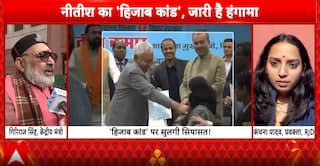India's Economic Indicators Give Conflicting Signs Of Recovery In July: Report
Moderation in business outlook in services pulled down the S&P Global India Composite PMI Index to 56.6 in July, from 58.2 a month earlier

Business and consumption activity in India showed conflicting signs of recovery in July as surging inflation, rising borrowing costs, and fears of a global slowdown weighed on Asia’s third-largest economy, Bloomberg said. According to the report, demand for Indian goods and services softened, a cross-section of high-frequency indicators.
The needle on a dial measuring so-called animal spirits, however, remained steady at 5 last month as the gauge uses a three-month weighted average to smooth out volatility in the single month readings.
The Reserve Bank of India (RBI), which has raised interest rates by a total of 140 basis points in three moves this year, has signalled future tightening would be calibrated to ensure there isn’t a massive slowdown in the economy, and sees price pressures moderating from its recent peak. A pulse-check of the economy is due next week, with gross domestic product data for the April-June quarter likely to show a double-digit growth, reflecting demand thanks to a wider reopening from the pandemic.
Purchasing managers’ surveys showed India’s services activity in July falling to the lowest level in four months on weaker sales growth and elevated inflation. While domestic demand for Indian services remained steady, international demand worsened, offsetting gains in the manufacturing sector that expanded to the highest level in eight months.
Moderation in business outlook in services pulled down the S&P Global India Composite PMI Index to 56.6 in July, from 58.2 a month earlier.
Trade deficit widened to a fresh record of almost $30 billion as exports growth slowed to a 17-month low led by weak global demand and a levy on outbound shipments of fuel, which makes up more than 15 per cent of India’s exports.
Imports stayed near the record-high levels due to a weaker rupee, which was one of the worst performing Asian currencies in the last three months. Crude, which comprises about one-third of India’s imports, and coal with an 8 per cent share, primarily contributed to the rise in inbound shipments.
Passenger vehicle sales rose for a second-straight month helped by a broad-based recovery in all segments, including two-wheelers. While supply issues due to semiconductor shortage are easing, automakers cautioned that costlier loans could crimp demand for new vehicles.
Bank credit continued to grow despite higher interest rates, rising the most in more than three years to 14.5 per cent at the end of July. Liquidity in the banking system continued to remain in surplus.
Among signs of industrial activity, factory output as well as core sector signalled moderation in June as electricity consumption and coal production slowed down with the onset of monsoons.
The year-on-year growth in Index of Industrial Production eased to 12.3 per cent from a one-year high in May. The growth of eight key infrastructure industries also dropped to 12.8 from 19.3 per cent in the previous month. Both the data are published with a one-month lag.






































